

漢德百科全書 | 汉德百科全书



 Financial
Financial
 *Brazil economic data
*Brazil economic data

 Financial
Financial
 *China economic data
*China economic data

 Financial
Financial
 *India economic data
*India economic data

 Financial
Financial
 *Indonesia economic data
*Indonesia economic data

 Financial
Financial
 *United States economic data
*United States economic data

 Financial
Financial
 *European Union economic data
*European Union economic data

 Economy and trade
Economy and trade
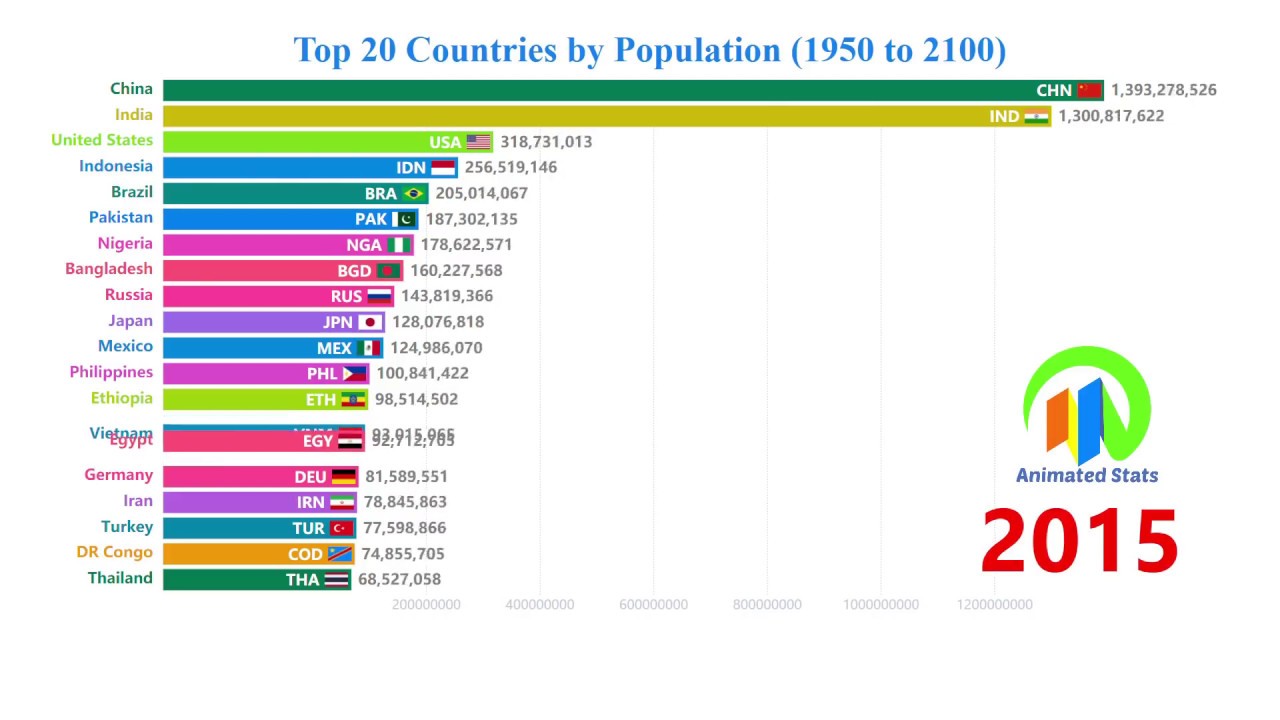

 Financial
Financial
 *Brazil economic data
*Brazil economic data

 Financial
Financial
 *China economic data
*China economic data

 Financial
Financial
 *Germany economic data
*Germany economic data

 Financial
Financial
 *European Union economic data
*European Union economic data

 Financial
Financial
 *France economic data
*France economic data

 Financial
Financial
 *India economic data
*India economic data

 Financial
Financial
 *Indonesia economic data
*Indonesia economic data

 Financial
Financial
 *Italy economic data
*Italy economic data

 Financial
Financial
 *Japan economic data
*Japan economic data

 Financial
Financial
 *Canada economic data
*Canada economic data

 Financial
Financial
 *Russia economic data
*Russia economic data

 Financial
Financial
 *United States economic data
*United States economic data

 Financial
Financial
 *United Kingdom economic data
*United Kingdom economic data

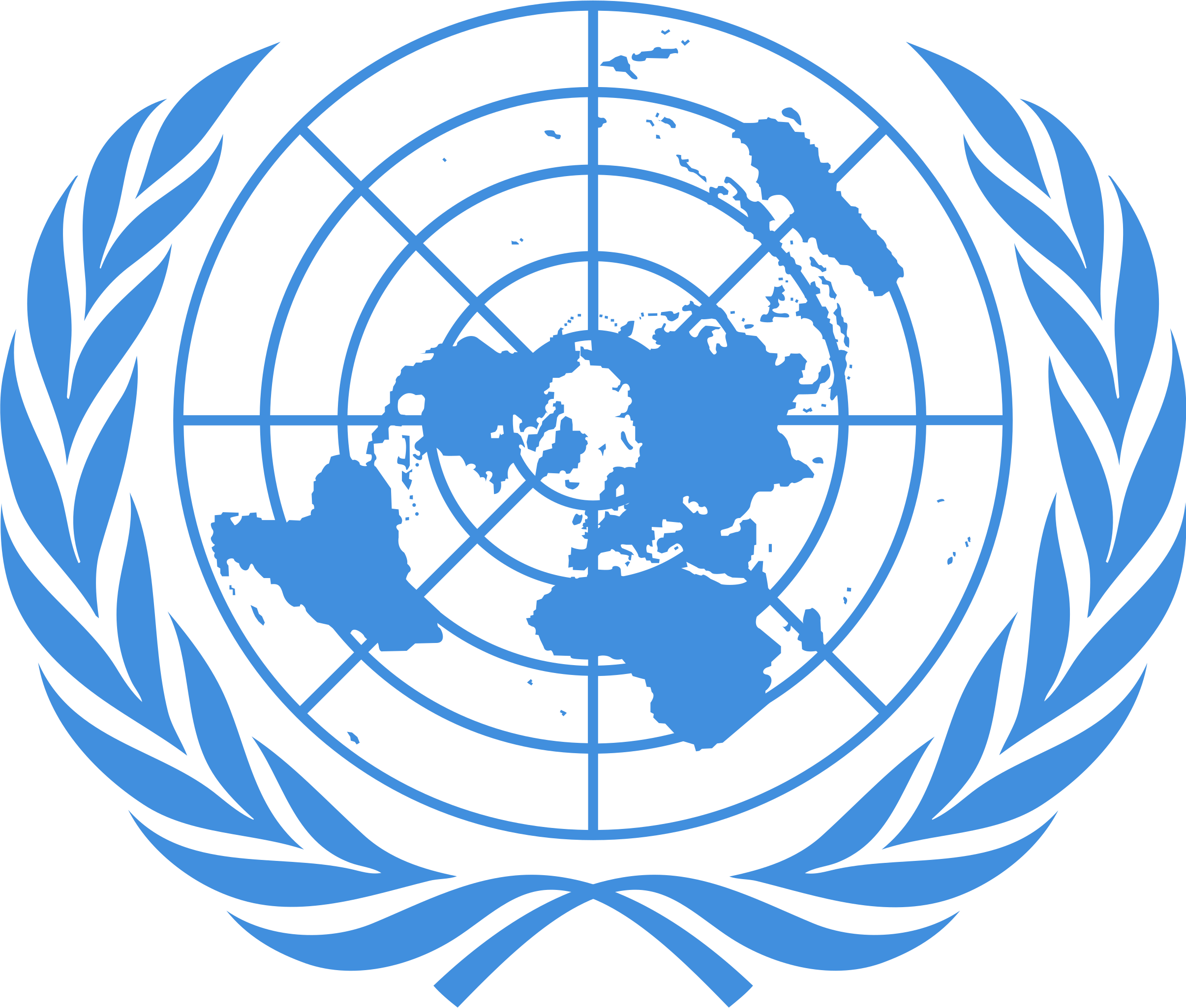 United Nations
United Nations

 Economy and trade
Economy and trade
 Economic and political research
Economic and political research
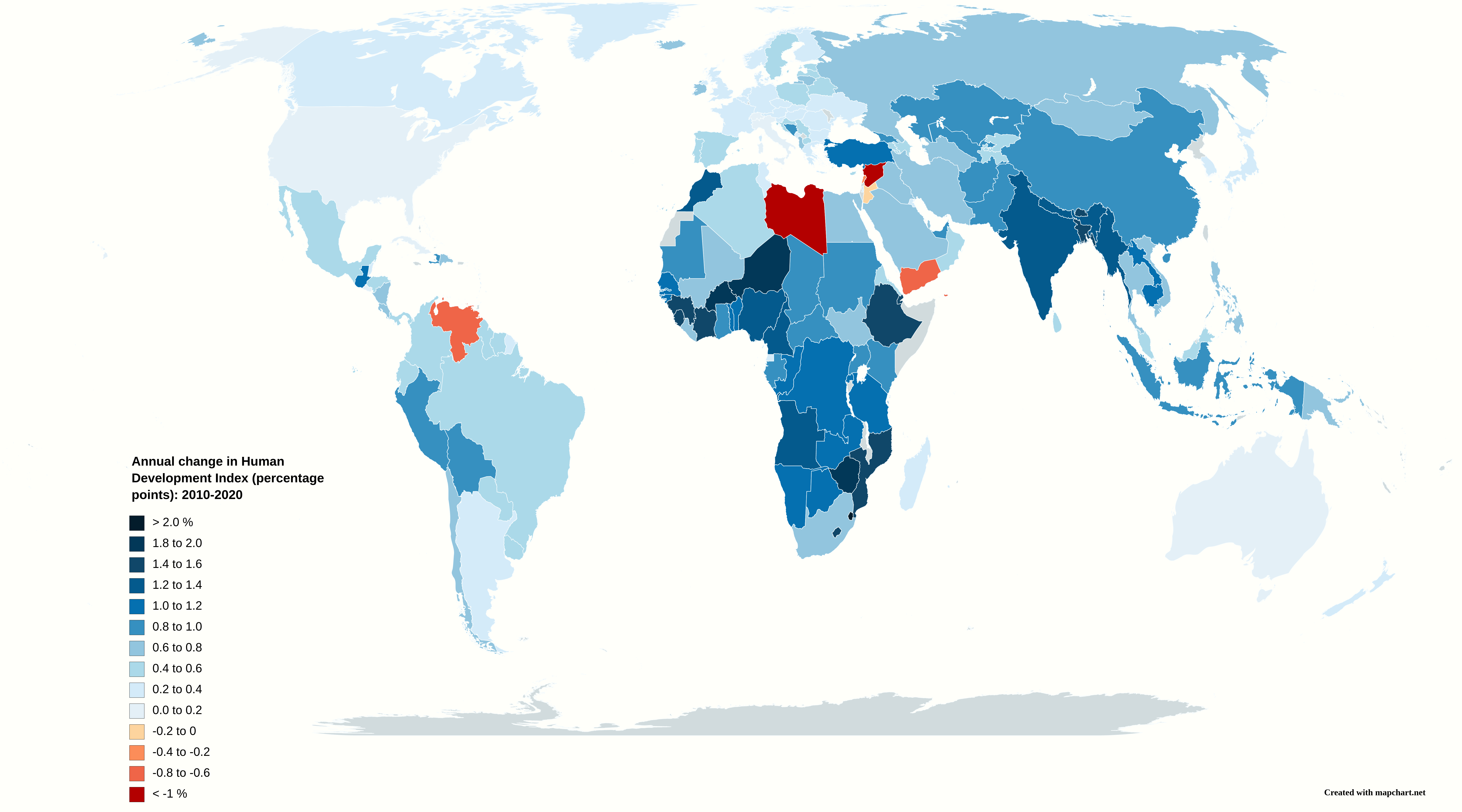
Der Index der menschlichen Entwicklung (englisch Human Development Index, abgekürzt HDI) der Vereinten Nationen ist ein Indikator für Staaten, der auch als Wohlstandsindikator bezeichnet wird.[1] Der HDI wird seit 1990 im jährlich erscheinenden Bericht über die menschliche Entwicklung (englisch Human Development Report) des Entwicklungsprogramms der Vereinten Nationen (UNDP) veröffentlicht.
Der HDI berücksichtigt nicht nur das Bruttonationaleinkommen pro Kopf, sondern ebenso die Lebenserwartung und die Dauer der Ausbildung anhand der Anzahl an Schuljahren, die eine 25-jährige Person absolviert hat, sowie der voraussichtlichen Dauer der Ausbildung eines Kindes im Einschulungsalter. Der HDI wurde im Wesentlichen von dem pakistanischen Ökonomen Mahbub ul Haq entwickelt, der eng mit dem indischen Ökonomen Amartya Sen sowie dem britischen Wirtschaftswissenschaftler und Politiker Meghnad Desai zusammenarbeitete.
Als Zusatz veröffentlicht das UNDP jedes Jahr den ungleichheitsbereinigten Index der menschlichen Entwicklung (IHDI: Inequality-adjusted Human Development Index). Dieser ergänzende Index ist ein Maß für menschliche Entwicklung, das Ungleichheit in Bildung, Gesundheit und Einkommen mit einschließt.
人类发展指数(英语:Human Development Index,缩写为HDI),是联合国开发计划署从1990年开始发布的一个指数,用以衡量各国社会经济发展程度的标准,并依此将各国和地区划分为四种等级:极高、高、中、低共四组。只有被列入第一组“极高”的国家才有可能成为发达国家。指数值根据出生时的平均寿命、受教育年限(包括平均受教育年限和预期受教育年限)、人均国民总收入计算出,在世界范围内可作为各国之间的比较。
人間開発指数(にんげんかいはつしすう、英語: Human Development Index, HDI)とは、各国を人間開発の4段階に順位付けするために用いられる平均余命、教育、識字及び所得指数の複合統計である。1990年にインド人経済学者のアマルティア・セン及びパキスタン人経済学者のマブーブル・ハックが開発し[1]、国際連合開発計画が刊行する[2]。
2010年の人間開発報告書では、不平等調整済み人間開発指数 (IHDI) が導入された。通常のHDIがなお有用である一方、IHDIは不平等を主要因とした人間開発の実際の水準を示し、HDIは「潜在的な」人間開発の指数又は不平等さえなければ実現可能な最大値のIHDIとして見なすことが可能である[3]。
男女格差に限定した類似指標としては、世界経済フォーラムが発表しているジェンダー・ギャップ指数が存在する。
The Human Development Index (HDI) is a statistic composite index of life expectancy, education (literacy rate, gross enrollment ratio at different levels and net attendance ratio), and per capita income indicators, which are used to rank countries into four tiers of human development. A country scores a higher HDI when the lifespan is higher, the education level is higher, and the gross national income GNI (PPP) per capita is higher. It was developed by Pakistani economist Mahbub ul Haq and was further used to measure a country's development by the United Nations Development Programme (UNDP)'s Human Development Report Office.[1][2][3]
The 2010 Human Development Report introduced an Inequality-adjusted Human Development Index (IHDI). While the simple HDI remains useful, it stated that "the IHDI is the actual level of human development (accounting for inequality), while the HDI can be viewed as an index of 'potential' human development (or the maximum level of HDI) that could be achieved if there were no inequality."[4]
The index is based on the human development approach, developed by Mahbub ul Haq, often framed in terms of whether people are able to "be" and "do" desirable things in life. Examples include – being: well fed, sheltered, healthy; doing: work, education, voting, participating in community life. The freedom of choice is central – someone choosing to be hungry (as during a religious fast) is quite different from someone who is hungry because they cannot afford to buy food, or because the country is in a famine.[5]
The index does not take into account several factors, such as the net wealth per capita or the relative quality of goods in a country. This situation tends to lower the ranking for some of the most advanced countries, such as the G7 members and others.[6]
L'indice de développement humain ou IDH (en anglais, human development index ou HDI) est un indice statistique composite pour évaluer le taux de développement humain des pays du monde. L'IDH se fondait alors sur trois critères : le PIB par habitant, l'espérance de vie à la naissance et le niveau d'éducation des enfants de 17 ans et plus.
Le concept du développement humain est plus large que ce qu'en décrit l'IDH qui n'en est qu'un indicateur, créé par le PNUD pour évaluer ce qui n'était mesuré auparavant qu'avec imprécision. L'indicateur précédemment utilisé, le PIB par habitant, ne donne pas d'information sur le bien-être individuel ou collectif, mais n'évalue que la production économique. Il présente des écarts qui peuvent être très importants avec l'IDH1. L'indice a été développé en 1990 par l'économiste indien Amartya Sen et l'économiste pakistanais Mahbub ul Haq2. Pour Sen comme pour le PNUD, le développement est plutôt, en dernière analyse, un processus d'élargissement du choix des gens qu'une simple augmentation du revenu national. Notons enfin qu'il existe un indice dérivé de l'IDH, le GDI (Gender-related Development Index), qui prend en compte les disparités liées au genre, soit les différences de situation de vie entre les hommes et les femmes d'un pays considéré.
La formule de calcul de l'IDH a été modifiée en 2010.
Dans le Rapport sur le développement humain de 2010, l'indice de développement humain ajusté selon les inégalités (IDHI) a été introduit. Bien que l'IDH reste utile, il mentionne que « l'IDHI est le niveau réel de développement humain (tenant compte des inégalités) » et que « l'IDH peut être vu comme un indice de développement humain "potentiel" (c'est-à-dire le niveau maximum d'IDHI qui pourrait être atteint en l'absence d'inégalités) »3.
L'indice di sviluppo umano (ISU, in inglese: Human Development Index, HDI) è un indicatore di sviluppo macroeconomico elaborato nel 1990 dall'economista pakistano Mahbub ul Haq, seguito inizialmente anche dall'economista indiano Amartya Sen. È stato utilizzato, accanto al PIL (prodotto interno lordo), dall'Organizzazione delle Nazioni Unite a partire dal 1993 per valutare la qualità della vita dei membri di un Paese.
In precedenza, veniva utilizzato soltanto il PIL, indicatore di sviluppo macroeconomico che rappresenta il valore monetario dei beni e dei servizi prodotti in un anno su un determinato territorio nazionale e che si basa quindi esclusivamente sulla crescita e non tiene conto del capitale (soprattutto naturale) che viene perso nei processi di crescita. Questi parametri misurano esclusivamente il valore economico totale o una distribuzione media del reddito. In pratica, un cittadino molto ricco ridistribuisce la sua ricchezza su molti poveri falsando in tal modo il livello di vita di questi ultimi.
Si cercò quindi, attraverso l'indice di sviluppo umano, di tener conto di differenti fattori, oltre al PIL procapite, che non potevano essere detenuti in modo massiccio da un singolo individuo, come l'alfabetizzazione e la speranza di vita, ottenendo in questo modo un indice multidimensionale. La scala dell'indice è in millesimi decrescente da 1 a 0 e si suddivide, in base ai quartili (dal 2010), in quattro gruppi: Paesi a sviluppo umano molto alto, Paesi ad alto sviluppo umano, Paesi a medio sviluppo e Paesi a basso sviluppo umano.
El índice de desarrollo humano (IDH) es un indicador del desarrollo humano por país, elaborado por el Programa de las Naciones Unidas para el Desarrollo (PNUD). Ha evolucionado al Índice de Desarrollo Ajustado por Desigualdad (IDHD).
Es un indicador sintético de los logros medios obtenidos en las dimensiones fundamentales del desarrollo humano, a saber, tener una vida larga y saludable, adquirir conocimientos y disfrutar de un nivel de vida digno. El IDH es determinado por la media aritmética de los índices normalizados de cada una de las tres dimensiones.
La dimensión de la salud se evalúa según la esperanza de vida al nacer, y la de la educación se mide por los años promedio de escolaridad de los adultos de 25 años o más y por los años esperados de escolaridad de los niños en edad escolar. La dimensión del nivel de vida se mide conforme al PIB per cápita.2
Индекс человеческого развития (ИЧР), до 2013 года «Индекс развития человеческого потенциала» (ИРЧП) — интегральный показатель, рассчитываемый ежегодно для межстранового сравнения и измерения уровня жизни, грамотности, образованности и долголетия как основных характеристик человеческого потенциала исследуемой территории. Он является стандартным инструментом при общем сравнении уровня жизни различных стран и регионов. Индекс был разработан в 1990 году группой экономистов во главе с пакистанцем Махбубом уль-Хаком; его концептуальная структура была создана благодаря работе Амартии Сена. Индекс публикуется в рамках Программы развития ООН в ежегодных отчётах о развитии человеческого потенциала с 1990 года.

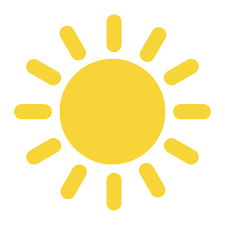 Energy resource
Energy resource
 *Nuclear power
*Nuclear power

 Energy resource
Energy resource
 Nuclear power plants
Nuclear power plants

 Financial
Financial
 *Japan economic data
*Japan economic data

 Economy and trade
Economy and trade


Die germanischen Sprachen sind ein Zweig der indogermanischen Sprachfamilie. Sie umfassen etwa 15 Sprachen mit rund 500 Millionen Muttersprachlern, fast 800 Millionen einschließlich der Zweitsprecher. Ein charakteristisches Phänomen aller germanischen Sprachen gegenüber den anderen indogermanischen Sprachen sind die Veränderungen im Konsonantismus durch die Germanische Lautverschiebung.
Dieser Artikel dient der Gesamtdarstellung der germanischen Sprachen. Auf Untergruppen und einzelne Sprachen und ihre Dialekte wird verwiesen. Die urgermanische Sprache wird in einem separaten Artikel behandelt.
- Englisch ist die sprecherreichste germanische Sprache mit rund 330 Millionen Muttersprachlern und mindestens 500 Millionen Zweitsprechern.
- Deutsch wird von etwa 100 Millionen Muttersprachlern und mindestens 80 Millionen Zweitsprechern gesprochen.
- Niederländisch (25 Millionen)
- Schwedisch (10 Millionen)
- Afrikaans (6,7 Millionen, mit Zweitsprechern 16 Millionen)
- Dänisch (5,5 Millionen)
- Norwegisch (5 Millionen; Bokmål und Nynorsk)
- Niederdeutsch (ca. 5 Millionen Erst- und Zweitsprecher; Stellung als eigenständige Sprache umstritten)
- Jiddisch (1,5 Millionen)
- Scots (1,5 Millionen; Stellung als eigene Sprache umstritten)
一些早期(约公元2世纪)的日耳曼语言发展出自己的卢恩字母(runic alphabet,北欧文字),但这些文字相对来说运用并不广泛。东日耳曼语支使用哥特字母,由乌斐拉主教将圣经译为哥特语时发展创立。其后,因为基督教神甫与僧侣既讲日耳曼语,也能够读说拉丁语,所以开始用稍加修饰的拉丁字母来书写日耳曼语言。
除去标准拉丁字母,各种日耳曼语言也使用一些标音符号和其他字母。其中包括元音变音(umlaut)、ß (Eszett)、 Ø、Æ、Å、Ð、Ȝ和从如尼文中继承下来的Þ及Ƿ。传统的印刷体德语经常用黑体字。
ゲルマン語派(ゲルマンごは、英: Germanic languages, 独: Germanische Sprachen, 瑞: Germanska språk)はインド・ヨーロッパ語族のうちの一語派。ドイツ語、オランダ語、英語などが含まれる。共通のゲルマン祖語から分化したとされる。
The Germanic languages are a branch of the Indo-European language family spoken natively by a population of about 515 million people[nb 1] mainly in Europe, North America, Oceania, and Southern Africa.
The West Germanic languages include the three most widely spoken Germanic languages: English with around 360-400 million native speakers;[3][nb 2] German, with over 100 million native speakers;[4] and Dutch, with 23 million native speakers. Other West Germanic languages include Afrikaans, an offshoot of Dutch, with over 7.1 million native speakers;[5] Low German, considered a separate collection of unstandardized dialects, with roughly 0.3 million native speakers and probably 6.7-10 million people who can understand it[6][7][8] (at least 5 million in Germany[6] and 1.7 million in the Netherlands);[9] Yiddish, once used by approximately 13 million Jews in pre-World War II Europe[10] and Scots, both with 1.5 million native speakers; Limburgish varieties with roughly 1.3 million speakers along the Dutch–Belgian–German border; and the Frisian languages with over 0.5 million native speakers in the Netherlands and Germany.
The main North Germanic languages are Danish, Faroese, Icelandic, Norwegian and Swedish, which have a combined total of about 20 million speakers.
The East Germanic branch included Gothic, Burgundian, and Vandalic, all of which are now extinct. The last to die off was Crimean Gothic, spoken until the late 18th century in some isolated areas of Crimea.[11]
The SIL Ethnologue lists 48 different living Germanic languages, 41 of which belong to the Western branch and six to the Northern branch; it places Riograndenser Hunsrückisch German in neither of the categories, but it is often considered a German dialect by linguists.[12] The total number of Germanic languages throughout history is unknown as some of them, especially the East Germanic languages, disappeared during or after the Migration Period. Some of the West Germanic languages also did not survive past the Migration Period, including Lombardic. As a result of World War II, the German language suffered a significant loss of Sprachraum, as well as moribundness and extinction of several of its dialects. In the 21st century, its dialects are dying out anyway[nb 3] due to Standard German gaining primacy.[13]
The common ancestor of all of the languages in this branch is called Proto-Germanic, also known as Common Germanic, which was spoken in about the middle of the 1st millennium BC in Iron Age Scandinavia. Proto-Germanic, along with all of its descendants, is characterised by a number of unique linguistic features, most famously the consonant change known as Grimm's law. Early varieties of Germanic entered history with the Germanic tribes moving south from Scandinavia in the 2nd century BC, to settle in the area of today's northern Germany and southern Denmark.
Les langues germaniques sont une branche de la famille des langues indo-européennes qui descendent toutes du proto-germanique. L'étude de ces langues se nomme la germanistique. Elles furent d'abord parlées par les peuples germaniques, qui vivaient initialement aux frontières nord-est de l'Empire romain. Ces langues partagent plusieurs traits uniques, parmi lesquels d'importantes mutations consonantiques décrites par les lois de Grimm et de Verner (auxquelles on peut ajouter la seconde mutation consonantique pour le vieux haut-allemand), ainsi qu'un important lexique composé de radicaux non indo-européens.
Les langues germaniques les plus parlées actuellement sont celles de la branche occidentale, à savoir l'anglais, l'allemand, et le néerlandais, ainsi que les langues scandinaves, principalement le suédois, le danois et le norvégien.
Le lingue germaniche sono un gruppo linguistico appartenente alla famiglia delle lingue indoeuropee. Sono parlate dai popoli di origine germanica che si erano stabiliti nel nord Europa lungo i confini dell'Impero Romano.
Le lingue germaniche più diffuse sono l'inglese e il tedesco. Altre lingue di rilevante importanza sono l'olandese, il suo derivato afrikaans e le lingue scandinave (soprattutto danese, norvegese e svedese). Ci sono circa 53 lingue germaniche stimate dal SIL International. L'antenato di tutte è il proto-germanico.
Las lenguas germánicas son un subgrupo de la familia de lenguas indoeuropeas habladas principalmente por los pueblos germánicos. Todas las lenguas germánicas derivan de un antecesor común, el cual es tradicionalmente denominado idioma protogermánico. La primera lengua germánica documentada es el gótico (siglo IV, "Biblia de Wulfilas"), hablada por los godos y que prevaleció en la península de Crimea hasta la Edad Moderna. También muy antiguas son las inscripciones en alfabeto rúnico, grabadas en armas o joyas, que dan información sobre otros dialectos germánicos.
Las lenguas germánicas se dividen comúnmente en tres ramas: la Germánica Oriental, la Germánica Nórdica y la Germánica Occidental. Las lenguas germánicas orientales están extintas en la actualidad, y a ellas pertenecían idiomas como el gótico, el vándalo y el burgundio. En la actualidad existen el inglés, el escocés, el alemán, el bajo alemán, el sueco, el islandés, el danés, el neerlandés, el afrikáans, el noruego, el luxemburgués, el frisón, el feroés y el yidish.
El nombre de Alamannia es la latinización de una frase en alto alemán antiguo: Alle Mannen (“todos los hombres”), que engloba a todos los pueblos que habitaban esa zona en tiempos de Julio César (teutones, bucinobantes, cuados, hermiones, etc.) y fue transmitido a varias lenguas modernas, como el árabe (ألمانيا), catalán (Alemanya), galés (Yr Almaen), córnico (Almayn), francés (Allemagne), gallego (Alemaña), portugués (Alemanha), español (Alemania), y turco (Almanya), frente a los derivados del latino Germania, como el inglés (Germany). El nombre Germani es la latinización de una palabra en lenguas renanas: Germanen (“de este lado del Rin”), que fue usada por Julio César para referirse específicamente a los eburones de la Galia Bélgica (al oeste del Rin).
Герма́нские языки — ветвь индоевропейской семьи. Распространены на территории ряда стран Западной Европы (Великобритания, Германия, Австрия, Нидерланды, Бельгия, Швейцария, Люксембург, Швеция, Дания, Норвегия, Исландия, Лихтенштейн), Сев. Америки (США, Канада), юга Африки (ЮАР, Намибия), Азии (Индия), Австралии, Новой Зеландии. Общее число говорящих как на родных языках — около 550 млн чел.
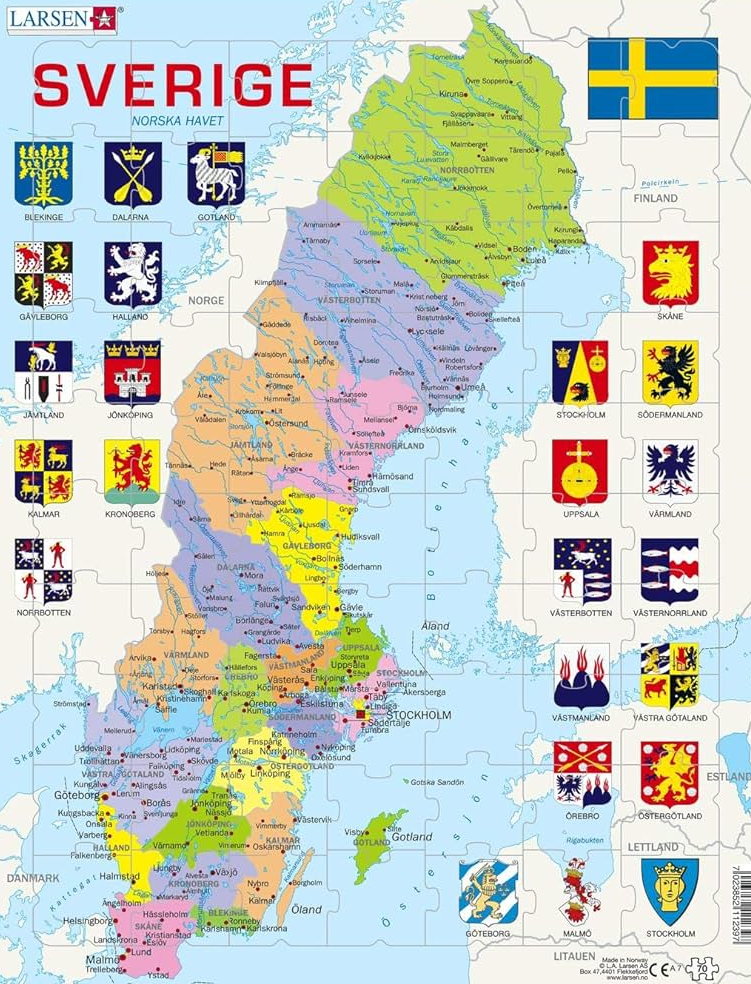
Schwedisch (Eigenbezeichnung: ) gehört zum ostnordischen Zweig der germanischen Sprachen. Damit ist das Schwedische auch Teil der indoeuropäischen Sprachfamilie. Das Schwedische ist eng verwandt mit dem Dänischen und dem Norwegischen (Bokmål, Nynorsk). Wie die anderen nordischen Sprachen stammt es vom Altnordischen ab, das die Sprache der Germanen in Skandinavien war.
瑞典语(![]() svenska 帮助·信息 [ˈsvɛ̂nːska]),中文也称瑞典文,是北日耳曼语(也称为斯堪的那维亚语)的一种,主要使用地区为瑞典、芬兰(尤其是奥兰群岛),使用人数超过九百万人。它和斯堪的那维亚地区另外两种语言——丹麦语和挪威语——是相通语言。和其它北日耳曼语一样,瑞典语来源于古诺尔斯语。古诺尔斯语是维京时期斯堪的那维亚地区通用语言。
svenska 帮助·信息 [ˈsvɛ̂nːska]),中文也称瑞典文,是北日耳曼语(也称为斯堪的那维亚语)的一种,主要使用地区为瑞典、芬兰(尤其是奥兰群岛),使用人数超过九百万人。它和斯堪的那维亚地区另外两种语言——丹麦语和挪威语——是相通语言。和其它北日耳曼语一样,瑞典语来源于古诺尔斯语。古诺尔斯语是维京时期斯堪的那维亚地区通用语言。
瑞典成人的识字率高达99%。标准瑞典语是瑞典官方语言,来源于19世纪瑞典中部的方言,并在20世纪初固定下来。标准瑞典语的口语和书面语是统一且标准化的。如今从一些古老的偏远地区的方言演化下来的其它语言变体依旧存在,部分方言和标准瑞典语在语法和词汇上有很大区别,已经不能称为相同语言。这些方言只在很偏僻的地区使用,并且使用的人数很少,而这些人社会流动性很低。虽然目前没有迹象这些语言将成为死语,有很多学者认真研究这些方言,并且当地政府也鼓励人们使用这些方言,但是自上个世纪以来,使用这些方言的人数还是逐渐减少。
瑞典语标准语序是主谓宾结构,有时为了强调某些词会更改语序。瑞典语的构词学和英语相近,词形变化相对较少;有两种词性,没有语法上的格(以前的研究认为有两种格,主格和属格);单数和复数之间有区别。形容词根据词性、数量和限定范畴的不同发生改变。名词的限定范畴通过不同后缀来表示,同时前面加以定冠词和不定冠词。韵律特征体现在重音和声调上。瑞典语有大量元音。瑞典语还以Sj音而著称,这是一种变化复杂的辅音音位。
スウェーデン語(スウェーデンご、svenska [ˈsvɛnːˈska] (![]() 音声ファイル))は、インド・ヨーロッパ語族ゲルマン語派北ゲルマン語群東スカンジナビア諸語に属する言語である。主にスウェーデンで使用される。
音声ファイル))は、インド・ヨーロッパ語族ゲルマン語派北ゲルマン語群東スカンジナビア諸語に属する言語である。主にスウェーデンで使用される。
長らくスウェーデンに支配されていたフィンランドでも国語としてフィンランド語と併用されている。ただし、公的表記はほとんど両語併記されるが、フィンランドでのスウェーデン語話者(スウェーデン語系フィンランド人)は6%以下である。フィンランド領のオーランド自治州ではスウェーデン語のみが公用語である。
インド・ヨーロッパ語族ゲルマン語派北ゲルマン語群のノルド語の一種に分類されている。同じ古ノルド語にはデンマーク語やノルウェー語も属する。この古ノルド3語の言語は、違いはあるものの非常に近く、それぞれの話者は他の言語をことさら学習していなくてもある程度理解できる。
ウクライナのヘルソン州(クリミア半島の北)にあるGammalsvenskby(「古いスウェーデン語の村」の意)には、エストニア沖の島々からロシア帝国によって18世紀初頭に強制移住させられた人々の子孫が住むが、ウクライナ語やロシア語に押されてスウェーデン語を話す者は減りつつある。
Swedish (Swedish: [ˈsvɛ̂nːska] (![]() listen)) is a North Germanic language spoken natively by 10 million people, predominantly in Sweden (as the sole official language) and in parts of Finland, where it has equal legal standing with Finnish. It is largely mutually intelligible with Norwegian and Danish, although the degree of mutual intelligibility is largely dependent on the dialect and accent of the speaker. Written Norwegian and Danish are usually more easily understood by Swedish speakers than the spoken languages, due to the differences in tone, accent and intonation. Swedish is a descendant of Old Norse, the common language of the Germanic peoples living in Scandinavia during the Viking Era. It has more speakers than any other North Germanic language.
listen)) is a North Germanic language spoken natively by 10 million people, predominantly in Sweden (as the sole official language) and in parts of Finland, where it has equal legal standing with Finnish. It is largely mutually intelligible with Norwegian and Danish, although the degree of mutual intelligibility is largely dependent on the dialect and accent of the speaker. Written Norwegian and Danish are usually more easily understood by Swedish speakers than the spoken languages, due to the differences in tone, accent and intonation. Swedish is a descendant of Old Norse, the common language of the Germanic peoples living in Scandinavia during the Viking Era. It has more speakers than any other North Germanic language.
Standard Swedish, spoken by most Swedes, is the national language that evolved from the Central Swedish dialects in the 19th century and was well established by the beginning of the 20th century. While distinct regional varieties and rural dialects still exist, the written language is uniform and standardized.
The standard word order is, as in most Germanic languages, V2, which means that the finite verb (V) appears in the second position (2) of a declarative main clause. Swedish morphology is similar to English; that is, words have comparatively few inflections. Swedish has two genders[2] and is generally seen to have two grammatical cases – nominative and genitive (except for pronouns that, as in English, also are inflected in the object form) – although it is debated if the genitive in Swedish should be seen as a genitive case or just the nominative plus the so-called genitive s, then seen as a clitic. Swedish has two grammatical numbers – plural and singular. Adjectives have discrete comparative and superlative forms and are also inflected according to gender, number and definiteness. The definiteness of nouns is marked primarily through suffixes (endings), complemented with separate definite and indefinite articles. The prosody features both stress and in most dialects tonal qualities. The language has a comparatively large vowel inventory. Swedish is also notable for the voiceless dorso-palatal velar fricative, a highly variable consonant phoneme.
Swedish has also had historic use in Estonia, although the current status of the Estonian Swedish speakers is almost extinct. Instead, it is used in the Swedish diaspora, most notably in Oslo, Norway, with more than 50,000 resident Swedes.[3]
Le suédois (svenska Écouter) est une langue scandinave parlée par environ 10,4 millions de locuteurs, principalement en Suède et en Finlande, les deux pays dont il est langue officielle. Comme les autres langues scandinaves, il est issu du vieux norrois, la langue commune à tous les peuples germaniques de Scandinavie à l'époque des Vikings. Il reste aujourd'hui mutuellement intelligible avec le danois et le norvégien. La langue écrite et orale est standardisée, mais il subsiste des variantes régionales issues des anciens dialectes ruraux.
Comme la plupart des langues germaniques, le suédois est une langue V2 : le verbe apparaît en deuxième position dans les propositions principales. La morphologie présente un nombre réduit de flexions. Il existe deux genres (commun et neutre) et deux nombres (singulier et pluriel), mais pas de cas. Par défaut, l'article défini est un clitique postposé, mais il existe également des articles séparés. L'adjectif s'accorde avec le nom en genre et en nombre, mais aussi en fonction de son caractère défini ou non. Phonologiquement, le suédois présente un nombre important de voyelles, ainsi qu'une consonne distinctive, le sj, dont la réalisation phonétique exacte varie selon les dialectes et reste débattue.
La lingua svedese () è una lingua germanica settentrionale parlata da 9,6 milioni di persone, prevalentemente in Svezia (come unica lingua ufficiale, dal 1º luglio 2009) ed in alcune zone della Finlandia (circa il 6% della popolazione soprattutto lungo le coste e nelle isole Åland), dove ha pari diritti legali insieme al finlandese. In gran parte è mutuamente intelligibile con il norvegese, mentre minore è l'intelligibilità reciproca con il danese. Discendente del norreno, lo svedese è attualmente la più parlata delle lingue germaniche settentrionali.
Lo svedese standard, parlato dalla maggior parte degli svedesi, è la lingua nazionale evolutasi a partire dai dialetti svedesi centrali nel XIX secolo. Malgrado esistano ancora distinte varietà regionali discendenti dai vecchi dialetti rurali, la lingua parlata e scritta è uniforme e standardizzata.
Alcuni di questi dialetti differiscono considerevolmente dalla lingua standard nella grammatica e nel vocabolario, e non sempre sono mutuamente intelligibili con lo svedese standard. Sebbene non siano in pericolo di un'imminente estinzione, simili dialetti sono stati in declino durante il secolo scorso, nonostante siano ben studiati e il loro uso sia spesso incoraggiato dalle autorità locali.
L'ordine standard delle parole nella frase è Soggetto Verbo Oggetto, sebbene possa essere spesso modificato per sottolineare alcune parole o frasi. La morfologia svedese è simile a quella inglese; le parole subiscono una minima flessione, ci sono due generi grammaticali, c'è distinzione tra singolare e plurale e non ci sono casi (sebbene vecchie analisi postulino due casi, nominativo e genitivo). Gli aggettivi conoscono una costruzione dei gradi di comparazione analoga a quella dell'inglese ma sono anche flessi secondo genere, numero e determinazione. La determinazione dei sostantivi è indicata principalmente attraverso suffissi (uscite), alle quali si affiancano anche alcune forme vere e proprie di articolo. La prosodia evidenzia la presenza sia dell'accento, sia, in molti dialetti, di qualità tonali. Lo svedese è foneticamente interessante anche per la presenza di una fricativa dorsopalatale velare sorda, un fonema consonantico altamente instabile.
El sueco (en sueco: ![]() svenska (?·i)) es una lengua germánica del norte de Europa, hablada por entre 9 y 14 millones de personas. La mayoría de sus hablantes vive en Suecia, en Finlandia y en las Islas Åland (autónomas), donde es el idioma oficial. El sueco es una lengua nórdica, al igual que el danés, el noruego, el islandés y el feroés. Las lenguas nórdicas son un subgrupo de las lenguas germánicas, las cuales forman parte de la familia lingüística conocida como lenguas indoeuropeas. El sueco, al igual que el resto de lenguas nórdicas, desciende del nórdico antiguo, hablado en Escandinavia durante la época vikinga. El sueco es en gran parte comprensible para un noruego y un danés.2
svenska (?·i)) es una lengua germánica del norte de Europa, hablada por entre 9 y 14 millones de personas. La mayoría de sus hablantes vive en Suecia, en Finlandia y en las Islas Åland (autónomas), donde es el idioma oficial. El sueco es una lengua nórdica, al igual que el danés, el noruego, el islandés y el feroés. Las lenguas nórdicas son un subgrupo de las lenguas germánicas, las cuales forman parte de la familia lingüística conocida como lenguas indoeuropeas. El sueco, al igual que el resto de lenguas nórdicas, desciende del nórdico antiguo, hablado en Escandinavia durante la época vikinga. El sueco es en gran parte comprensible para un noruego y un danés.2
El sueco estándar (rikssvenska) es la lengua nacional que evolucionó a partir de los dialectos del centro de Suecia durante el siglo XIX y se estableció completamente a principios del siglo XX. Si bien en la actualidad existen todavía varios dialectos rurales, el idioma hablado y escrito es uniforme y estándar con más del 99 % de habitantes adultos alfabetizados. Algunos de los dialectos genuinos difieren considerablemente del sueco estándar en gramática y vocabulario y no siempre son mutuamente comprensibles con el sueco (por ejemplo, el lenguaje del norte de Dalarna). Estos dialectos están confinados a áreas rurales con poca movilidad social. Si bien no están en peligro de desaparición, las poblaciones que hablan estos dialectos se están reduciendo a pesar de los esfuerzos de las autoridades regionales para preservar su uso.
El sueco se distingue por su prosodia, que difiere considerablemente entre variedades. Esta incluye tanto cualidades de acento como de tono. La existencia de dos tonos lingüísticos es un fenómeno compartido con el idioma noruego estándar, pero no con el danés. El idioma tiene nueve sonidos vocales que se distinguen por su longitud y sus cualidades, con lo que se forman 17 fonemas vocales. El sueco es también notable por la existencia de un fonema dorso-palatal velar fricativo sordo, un sonido que se encuentra en muchos dialectos, incluyendo las formas más prestigiosas del idioma estándar. Aunque similar a otros sonidos con distintas cualidades labiales, hasta ahora no se ha ubicado en otros idiomas; se asemeja parcialmente a una pronunciación simultánea de una sh-inglesa y una j-castellana. En el idioma escrito, este sonido se representa por combinaciones como sk-, skj, stj-, sj- y otras.
Шве́дский язы́к (svenska ) — язык восточной подгруппы скандинавской группы, на котором говорят в Швеции, части Финляндии и на автономных Аландских островах. Самый распространённый язык Скандинавии с числом носителей, превосходящим девять миллионов.

 Brazil
Brazil
 China
China
 India
India
 Cambodia
Cambodia

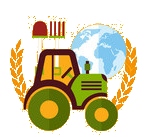 Agriculture, forestry, livestock, fishing
Agriculture, forestry, livestock, fishing
 Myanmar
Myanmar
 Pakistan
Pakistan
 Thailand
Thailand
 Uruguay
Uruguay
 United States
United States
 Vietnam
Vietnam
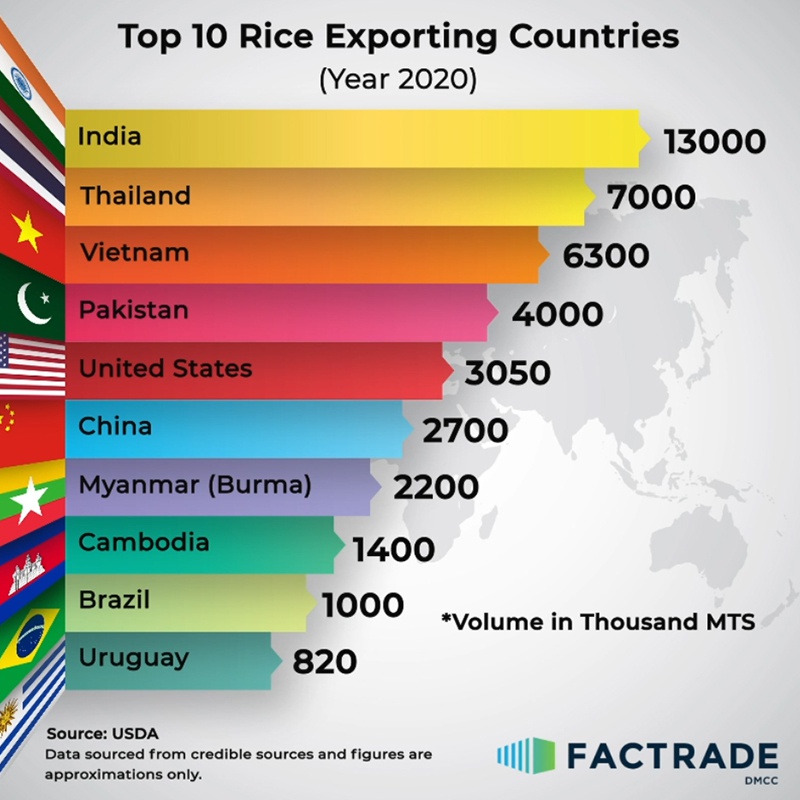



 Financial
Financial

 Financial
Financial
 *Brazil economic data
*Brazil economic data

 Financial
Financial
 *China economic data
*China economic data

 Financial
Financial
 *Germany economic data
*Germany economic data

 Financial
Financial
 *European Union economic data
*European Union economic data

 Financial
Financial
 *France economic data
*France economic data

 Financial
Financial
 *India economic data
*India economic data

 Financial
Financial
 *Indonesia economic data
*Indonesia economic data

 Financial
Financial
 *Italy economic data
*Italy economic data

 Financial
Financial
 *Japan economic data
*Japan economic data

 Financial
Financial
 *Canada economic data
*Canada economic data

 Financial
Financial
 *Russia economic data
*Russia economic data

 Financial
Financial
 *United States economic data
*United States economic data

 Financial
Financial
 *United Kingdom economic data
*United Kingdom economic data

 Geography
Geography
 Eat and Drink
Eat and Drink
 History
History
 Literature
Literature
 Hand in Hand
Hand in Hand